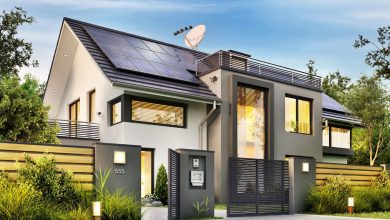Making your home as energy efficient as possible has never been more critical. With climate change, draining resources, and many other issues our planet faces, the best way to contribute to the global fight to stay on the ecological side is by renovating your home to make it more energy-efficient.
Why is it essential to have an energy-efficient home?
We’re running out of time in the fight against climate change. Luckily, some countries, like the UK, realized that and are making the necessary steps. But, regardless of where you live, you can and should do your best to participate in the race to save the planet. Because, as they say, there is no planet B. And if you need an additional push, an ecological approach to your house is going to save you a lot of money.
Since most houses that we’ll use in the years to come have already been built, renovating or retrofitting your house to be more energy efficient is the best possible road to take. So, here’s what kind of renovation you should take on to have a more energy-efficient home.
Insulate your home
Before doing anything, you should ensure your home is keeping the warmth inside in winter and the cold in summer. The energy created in your house must be used in the right way. That is the core of energy efficiency. And it’s done with proper insulation of your home.
The simple way to describe full home insulation is making sure no-where is leaking. You should check your walls, doors, and windows and make sure you insulate, seal and glaze where necessary so no energy goes in or out unwanted.
This doesn’t mean you have to change your leaky doors and windows or build new walls. There are many more affordable ways to have the insulation done on all of them. For smaller leaks, you’ll even be able to make it a DIY project.
The first thing you want to do is identify the leakage and then see what is the best possible approach. For windows, it could be energy-efficient window inserts or additional glazing. The latter is a good solution for doors too. Walls might be the most expensive project, but your electric bill will quickly show the return on your investment.
Heating and cooling
Now that you’re sure your energy is staying put, it’s time to consider a more energy-efficient way your home is kept warm or cold.
Heat pumps
Currently, one of the best renewable energy sources out there is a heat pump. This device works similarly to fridges and A/Cs: it extracts heat from a low-temperature source and delivers it to a higher-temperature place. The source can be air or the ground and that’s why we have two kinds of heat pumps available.
Heat pumps are good for your heating and cooling, and some of them can additionally heat the water thus being a substitute for the boiler too. These appliances are not cheap, but they are so efficient you’ll swiftly notice a change on your bill, much like after insulation. They need a significant amount of space, so keep that in mind when planning the installation: you’ll probably need a whole utility room.
Solar panels
When it comes to heating your water, one of the most effective green alternatives to electrical boilers is solar panels. These panels can be attached to your wall or roof, and they heat water for your household using the energy harvested from sunlight.
You don’t have to worry about cloudy days. Panels don’t need direct sunlight so they’ll be perfectly fine on a cloudy day too. As for the seasons, during summer you should be covered 100 % of the time, and during winter up to 60 %. This is still great and it will help you lower your carbon footprint as well as your electrical bill.
Lights and appliances
Lights and appliances are significant energy users and choosing them wisely can help you a lot with energy saving and reducing the carbon footprint, thus being kind to our planet.
As small as light bulbs seem, they are responsible for up to 20 % of the energy we are charged for. To decrease that amount as much as possible, we recommended switching to LED lights. They’re easy to fit anywhere and, of course, will show you their effectiveness quickly.
When it comes to appliances, if buying new ones is part of your renovation process, choose as green as possible. This is fairly easy since all you need to do is go for a product that has one of the following certificates:
- Energy Star
- The U.S. Department of Energy (DOE)
- The Environmental Protection Agency (EPA)
In case you’re not buying new appliances yet, what you can do is make sure the ones you have are unplugged when not in use. Additionally, consider the frequency of usage and make sure it’s not excessive. On top of all that, make sure they’re cleaned often and functioning properly.
To conclude
Renovating your home to be more energy efficient is a challenging task, and more importantly, not a cheap one. But the investment you make will quickly come back. This is because, as we said multiple times in the article, every greener solution will mean a significantly smaller amount to pay for energy. And saving the planet is a great bonus too.





